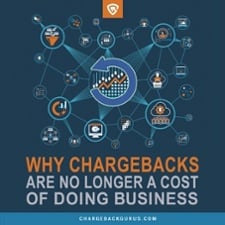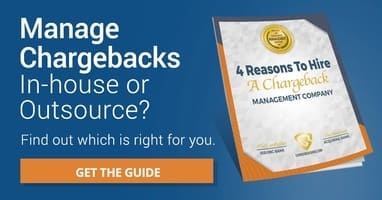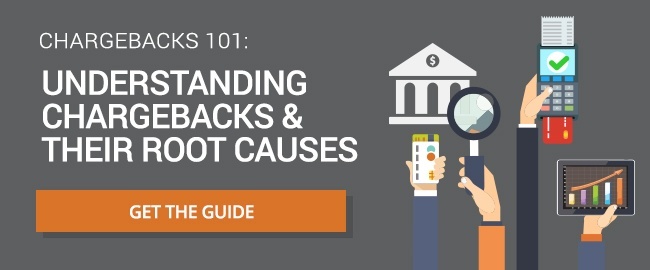The 12 Most Common Reasons for Returns
Most merchants would prefer it if no customer ever asked to return a purchase, especially given recent trends toward exceedingly generous return policies. These days it's simply expected that the merchant will pay the costs for return shipping, making refunds even more costly. Nevertheless, returns do have one significant upside: they're not chargebacks. The costs and consequences of chargebacks are far greater than those of returns, and every refund is a potential chargeback avoided.
Like chargebacks, returns can be prevented by identifying and addressing the root causes that lead to them. In fact, the problems that cause returns are often some of the same ones that cause chargebacks, so improving your business practices to reduce one will often reduce the other as well. Let's take a look at the most common causes of returns and how merchants can use this knowledge to increase customer satisfaction and prevent disputes.
- Why Do Customers Return Their Purchases?
- Returns and Chargebacks
- Proactive Strategies to Minimize Returns and Chargebacks
- FAQ: What Is a Double Refund Chargeback?

It’s smart to have a generous return and refund policy. When customers know they can come to you with their problems, return an unwanted purchase, and get their money back, they have little reason to dispute the transaction with their bank instead.
With a return and refund, you only lose out on the cost of the transaction, and you may even be able to resell the returned product.
A chargeback, on the other hand, costs you the purchase price, the product, the costs of selling it, and the associated fees. The average chargeback actually costs more than double the amount of the original purchase. There's also the ever-present risk that an excessive chargeback ratio will get you in trouble with your acquirer.
Another silver lining to returns and refunds is that they have the potential to make the customer feel positively inclined toward the merchant and more likely to shop with them again. Chargebacks, on the other hand, are likely to leave a customer with negative feelings about the merchant, and can lead to bad reviews, negative word of mouth, and the end of the customer relationship.
Why Do Customers Return Their Purchases?
It’s important to understand why customers make returns, because the same reasons often lead to far more damaging chargebacks. “Friendly fraud” refers to chargebacks that are based on falsified claims, and these often occur because a customer is dissatisfied with their purchase and frustrated with the merchant’s return policy. Preventing that dissatisfaction prevents returns and chargebacks alike.
Analyzing the reasons why your customers might be unhappy can shed light on any chargeback problems you might be having and show you where you need to improve your customer service and other business operations.
While it's impossible to get inside the mind of every customer, here are twelve of the most common reasons why customers return their purchases:
The customer ordered the wrong product or size
Customers often order the wrong thing. It could be clothes that don’t fit, an accessory that turns out to be incompatible with their device, or a replacement part for the wrong equipment model. While they surely would have benefited from considering their purchase more carefully, it’s understandable that they wouldn’t want to be stuck with a product they can’t use.
To reduce the number of returns caused by this issue, be sure to clearly state any compatibility concerns in the product description, preferably at or near the top of the page.
You should also have a complete list of compatible items that's easy for customers to find and search.
For products that come in different sizes, many e-commerce merchants have started asking customers about the item's size when they leave a review. A chart next to the available sizes then indicates the percentage of reviewers that said the item ran small, ran large, or was true to the listed size. This can help customers make an informed decision about what size to select before they check out.
The merchant shipped the wrong product or size
On the other hand, sometimes the customer places their order correctly, but the merchant ships the wrong item. In these instances, the merchant has a clear obligation to accept the return and ship the correct item.
The only way to prevent this is to improve your employee training and internal procedures to ensure accuracy. Labels and color-coded packaging can make it easier for your warehouse crew to know what they're sending out.
The product was damaged or defective
Items sometimes get damaged during shipping, or they leave the warehouse in damaged or defective condition. Once again, the merchant is obligated to issue a refund. The customer clearly has the right to receive an undamaged and functional product or get their money back. To avoid this, inspect items and pack them carefully before shipping.
Frequent reports of products being damaged during shipping may indicate that some items aren't being protected sufficiently. Securely packaging purchases (especially those with multiple items of irregular size or those containing fragile products) can be tricky, so it's important to keep an eye out for signs of recurring issues.
In some cases, frequently damaged products may instead indicate that the shipping service the merchant has partnered with isn't doing a very good job and may need to be replaced.
The product arrived too late
 Some purchases are time sensitive, and if the merchant takes too long to fulfill the order, or if delivery is delayed for some reason, the customer will no longer need it. While some delays are unavoidable, it’s always best to ship orders promptly and use fast, reliable carriers.
Some purchases are time sensitive, and if the merchant takes too long to fulfill the order, or if delivery is delayed for some reason, the customer will no longer need it. While some delays are unavoidable, it’s always best to ship orders promptly and use fast, reliable carriers.
When delays are unavoidable, the you should always let the customer know immediately and provide them with the ability to track the shipment. Transparency and clear communication can give you the best chance of working out amicable solutions and avoiding contentious disputes.
The customer no longer needed the product
Occasionally, even when the merchant does their best to fulfill an order immediately, the customer no longer needs it by the time it arrives. While this may not be the merchant’s fault, it should come as no surprise that the customer will look for a way to get their money back. Once again, making sure your shipping is fast and reliable is all you can do to cut down on these returns.
The customer experienced buyer’s remorse
Another frustrating situation is when a customer buys something impulsively and sends it back for no good reason. Tempting as it may be to protect your revenue by insisting on a justification for returns, such policies rarely serve merchants well. If a customer is unable to return an item, they may file a chargeback instead, even if they don't have a legitimate reason for doing so.
The product did not match the description
When there is a great divergence between the way a product is depicted by the merchant and the actual appearance or functionality of the product, customers often feel ripped off, and who can blame them? Issuing banks will often judge this to be a valid reason for a chargeback, which means merchants won't necessarily be able to fight such chargebacks and win.
Merchants can avoid this problem by providing honest and detailed product descriptions and photos in their website, catalog, and other marketing materials.
Merchants should also be wary of relying on product images provided by the manufacturer and should check that these match the actual item before using them.
The product did not meet the customer’s expectations
At times, the gulf between expectations and reality is not the merchant’s fault. Sometimes customers bring their own assumptions to the table and anticipate the product doing things that the merchant never promised. Fashion items are also frequently subject to these returns, since a product image can't tell a customer how the item will look on them. Offering a refund in these cases can avoid chargebacks and preserve customer loyalty.
The product was a gift
Buying gifts for others can be challenging, and gifts are often given with the disclaimer, “You can return it if you don’t like it!” In many cases, that's exactly what happens. There's no easy way to avoid these returns, since the person returning the item is not the same person who purchased it, and may not even have a preexisting customer relationship with the merchant.
The customer found a better price somewhere else
There’s no better trigger for buyer’s remorse than to see the item you just purchased offered for sale at a much lower price elsewhere. If a customer in this predicament doesn't have the option to return the product, they may be tempted to try for a friendly fraud chargeback. One way to avoid losses from being undercut by your competitors is to offer price-matching guarantees.
The customer was wardrobing
“Wardrobing” is the practice of purchasing an item with the intention of returning it once it has been used for a specific purpose. It might be a specialty tool purchased for a single use, a fancy garment worn for a special event, or a huge TV bought for a Super Bowl party.
Customers who engage in wardrobing are clearly abusing merchants’ return policies, but refusing them may leave you stuck dealing with a friendly fraud chargeback, since a customer who's willing to purchase and return an item with ill intent is probably willing to make up false dispute claims as well.
If you suspect a customer of wardrobing, the smartest move may be to accept the return, but block them from making future purchases.
The purchase was fraudulent
Returns may also be used to launder money from stolen credit cards. The fraudster pays for an item with a stolen card, then returns it for cash. One way to avoid this is to offer refunds only to the original card or in-store credit for card purchases, but it’s even better to avoid it altogether by using anti-fraud filters, multi-factor authenticators, and other tools that block stolen card transactions.
Returns and Chargebacks
Returns and chargebacks often happen for the same reasons. The only difference is the path the customer chose to take to get their money back.
When merchants are accessible, easy to deal with, and quick to offer refunds when a customer is unhappy, they have a better chance of preventing disputes and avoiding friendly fraud.
No merchant enjoys having to give up revenue, but refunds are always a better alternative to chargebacks. A return and refund policy that puts the customer first can be an important part of any chargeback prevention strategy.
Proactive Strategies to Minimize Returns and Chargebacks
Enhance Product Descriptions and Imagery
Utilize Interactive Size Guides
Improve Quality Control and Packaging
Optimize Order Fulfillment and Shipping
Implement Price-Matching Guarantees
Educate Customers on Product Use
Detect and Prevent Wardrobing
Utilize Anti-Fraud Measures
FAQ
What Is a Double Refund Chargeback?
Thanks for following the Chargeback Gurus blog. Feel free to submit topic suggestions, questions or requests for advice to: win@chargebackgurus.com.


